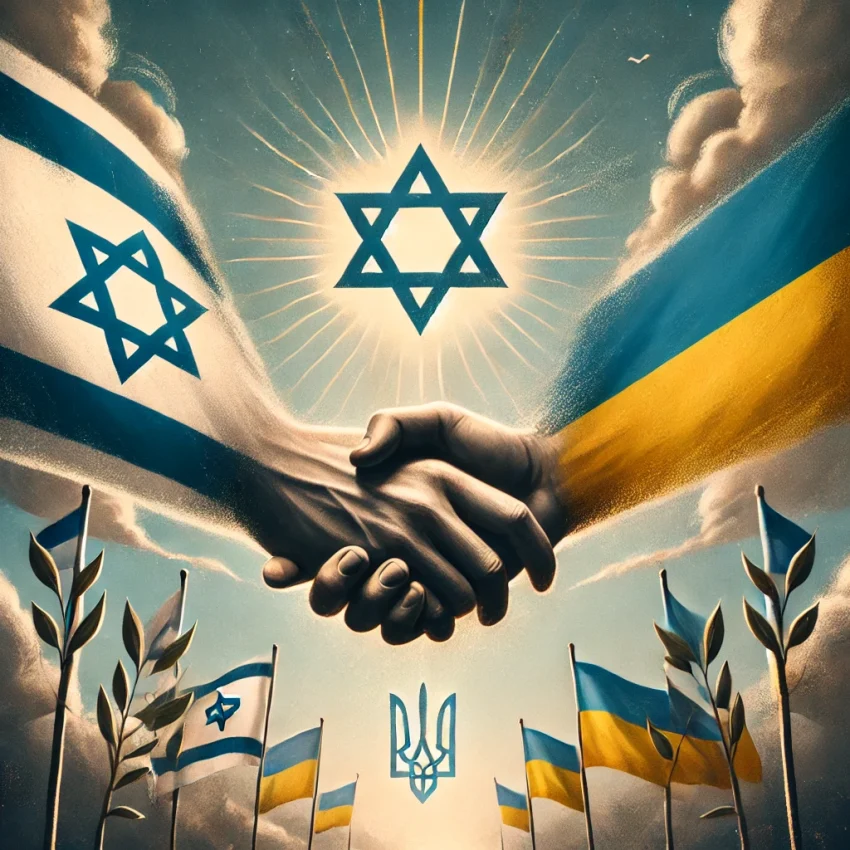Zelenskyy
The wars in Ukraine and Israel might appear as separate conflicts, each tied to its unique regional dynamics. However, a closer examination reveals an unsettling trend: a growing alignment of forces opposing Western democracies, led by Russia and Iran, whose influence extends across both theaters. What began as isolated proxy wars now risks converging into a single, global struggle—pitting democracy against tyranny.
Two Fronts, One Ideology
Ukraine and Israel, though geographically distant, share a common role as frontline defenders of democratic values and Western interests. Ukraine fights for its sovereignty against Russia’s expansionist ambitions, while Israel defends itself against Iranian-backed proxies seeking its destruction. Both conflicts are steeped in an ideological battle, with authoritarian regimes rallying their allies against the principles of democracy and freedom.
At the heart of this alignment is a strategic partnership between Russia and Iran, two regimes united by their opposition to the Western-led global order. Through direct military aid, proxy networks, and economic deals, they have created a coalition that not only sustains their respective wars but increasingly intertwines them.
The Puppets of Russia and Iran
Iran’s Role: A Cross-Theater Instigator
Iran has become a central player in both conflicts. In Ukraine, Tehran provides Russia with Shahed drones, used to target civilian infrastructure and terrorize Ukrainian cities. Reports suggest Iranian personnel are present in Crimea, helping Russian forces operate these systems.
In Israel, Iran is the primary backer of Hamas, Palestinian Islamic Jihad, and Hezbollah. It supplies weapons, funds, and training to these groups, enabling their attacks on Israeli civilians. Iran’s ambitions go beyond regional dominance; its actions signal a larger goal of challenging Western influence globally.
Lebanon: Hezbollah’s Double Game
Hezbollah, a well-trained militant group funded and armed by Iran, operates on Israel’s northern border. While its involvement in Ukraine is less overt, its Iranian sponsors’ deepening ties with Russia suggest a potential role in future cross-theater operations. Hezbollah’s extensive experience in urban warfare and asymmetric tactics could make it a valuable asset for Russia, should Iran choose to escalate its support in Ukraine.
Syria: A Battlefield and Recruitment Ground
Syria, a long-time ally of both Russia and Iran, is a key link in this axis. Syrian fighters, often veterans of the country’s civil war, have been recruited to fight in Ukraine alongside Russian forces. Russia’s military presence in Syria provides strategic depth for its operations, while Iran uses Syrian territory to funnel weapons to Hezbollah and Hamas. This shared use of Syria as a base of operations highlights the growing overlap between the two conflicts.
Palestine: A Tool of Iranian Influence
Palestinian groups, particularly Hamas, are instrumental in Iran’s regional strategy. While their direct involvement in Ukraine is minimal, the broader alignment with Iran places them in the same ideological camp opposing the West. Recent reports of Palestinians from refugee camps being recruited to fight for Russia underscore the fluidity of these alliances.
Yemen: The Houthi Connection
Yemen’s Houthi rebels, another Iranian proxy, have indirectly supported Russia’s war in Ukraine. They facilitate the recruitment of Yemeni mercenaries for Russian forces, exploiting economic desperation in war-torn Yemen. This cooperation demonstrates how Iran’s regional allies are increasingly drawn into global conflicts at Tehran’s behest.
North Korea: A Silent but Strategic Player
North Korea, while not directly tied to the Middle East, contributes to Russia’s war effort by supplying artillery shells and ammunition. Its authoritarian regime aligns ideologically with the Russia-Iran axis, and its actions bolster Moscow’s capacity to sustain its offensive in Ukraine.
The Risk of Convergence
The alignment of these actors—Russia, Iran, and their proxies—poses a grave threat to global stability. As these networks deepen, the boundaries between regional conflicts blur. The Ukraine war and the Middle East tensions risk merging into a single, larger confrontation between Western democracies and a coalition of authoritarian states.
The implications are profound:
- Shared Resources and Tactics: The same Iranian drones terrorizing Ukraine are used by Hezbollah and Hamas against Israel. Fighters and weapons flow between these theaters, creating a unified front.
- Strategic Distraction: By escalating conflicts in the Middle East, Russia diverts Western resources and attention from Ukraine. This tactic weakens NATO’s ability to focus on a single theater.
- Global Polarization: Countries with authoritarian leanings, like North Korea and Syria, rally behind Russia and Iran, while democracies consolidate their support for Ukraine and Israel.
A Call for Unified Action
If these wars converge, the world could face a broader, more dangerous conflict: a global war of democracies versus tyrannies. Ukraine and Israel, as symbols of resistance, cannot be left to fight alone. The West must recognize the interconnected nature of these struggles and respond with a unified strategy.
- Military Support: Bolster defenses in both Ukraine and Israel with advanced weapons and intelligence sharing.
- Diplomatic Alliances: Strengthen ties among democracies to counter the authoritarian bloc.
- Economic Sanctions: Target Russia, Iran, and their proxies with coordinated sanctions to disrupt their ability to fund wars.
The stakes are clear: the survival of democratic values and the rules-based international order. Ignoring the signs of convergence risks allowing these conflicts to spiral into a global catastrophe. The time to act is now, before two wars become one.
We just hope that China will not join this mess.
Andrea Bodei

